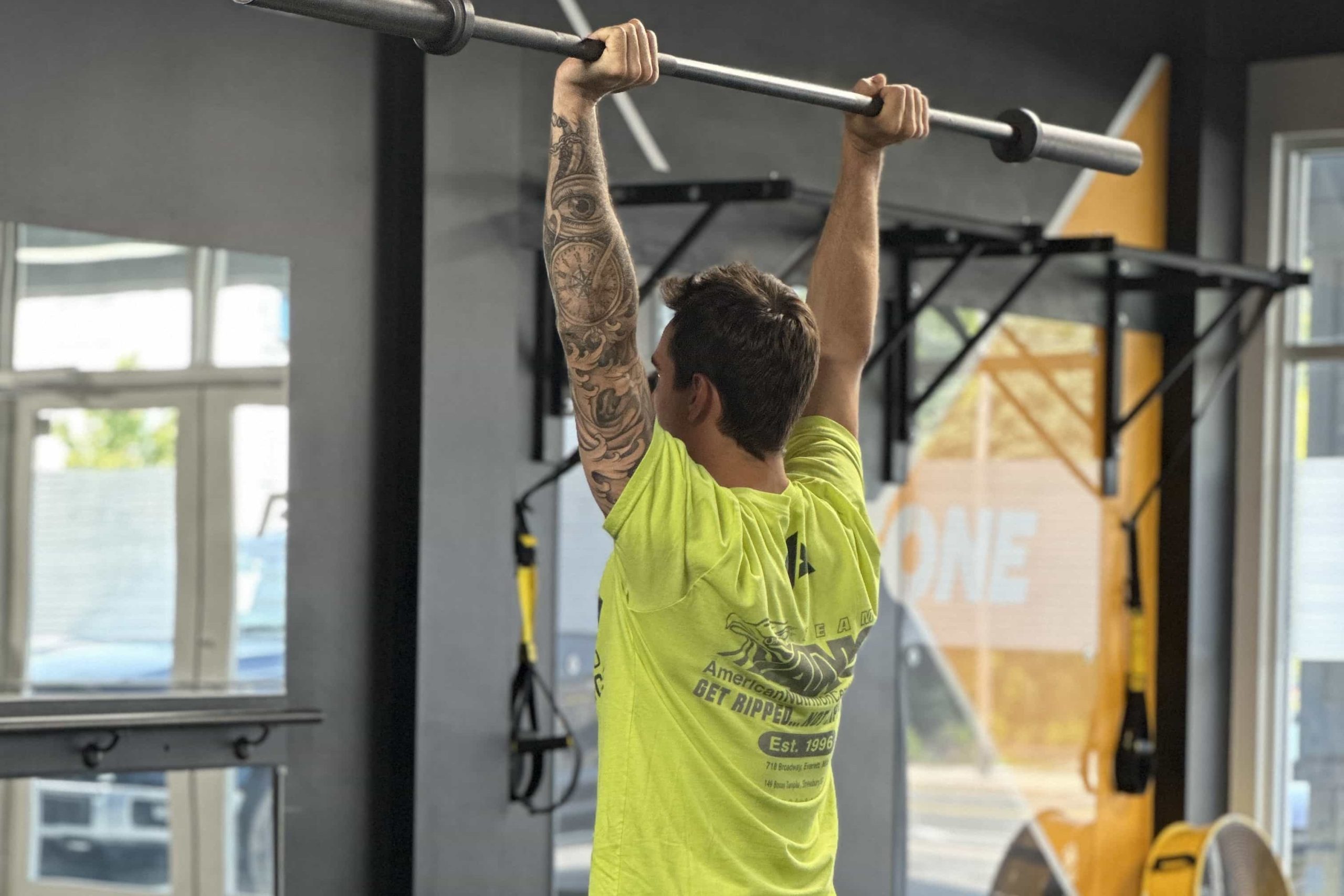Optimize Your Performance: Physical Therapy for Weightlifters & CrossFit
- Enhances technique to reduce injury risk
- Addresses muscle imbalances for balanced strength
- Speeds up recovery and tissue healing
- Improves mobility and functional movement
- Builds a stronger, more resilient body

What is Physical Therapy for Weightlifters & CrossFit
and How Does It Help?
Physical therapy for Weightlifters & CrossFit athletes is a specialized approach that targets the demands of high-intensity and strength-based workouts. By assessing movement patterns, muscle balance, and joint mobility, your therapist designs a plan to optimize your lifting form, prevent overuse injuries, and enhance overall performance.
Tailored exercises and hands-on techniques help correct faulty movement mechanics that can lead to shoulder impingement, lower back strain, or knee pain. This proactive approach ensures you can push your limits safely while minimizing downtime.
Whether you’re a CrossFit enthusiast striving for a new PR or a competitive weightlifter honing technique, physical therapy offers guidance on proper warm-ups, mobility work, and progressive strengthening. This holistic framework can drastically reduce injury risk, boost recovery, and give you a competitive edge.
Physical therapy also addresses the functional strength and conditioning that CrossFit and weightlifting demand—maintaining healthy joints, balanced muscle activation, and proper neuromuscular control. Whether you’re recovering from a recent strain or looking to prevent recurring issues, this specialized care meets you where you are and elevates your fitness journey.
Ultimately, physical therapy for Weightlifters & CrossFit athletes helps you train smarter, progress faster, and stay injury-free, so you can continue achieving your performance goals with confidence.

In The Zone
Conditions Physical Therapy for Weightlifters & CrossFit Can
Help Address: (A-Z)
Bicipital Tendinitis
Overhead lifts and pulling movements can aggravate the biceps tendon. Physical therapy targets scapular stability and correct arm mechanics to relieve stress on the tendon.
Bursitis (shoulder)
Repetitive overhead presses can inflame the bursae in the shoulder. PT improves posture, scapular motion, and rotator cuff strength to ease irritation.
Elbow Epicondylitis (lateral or medial)
Known as tennis or golfer’s elbow, this condition can flare with high-volume gripping or pulling. Therapy focuses on forearm muscle balance and eccentric strength exercises.
Impingement Syndrome
Excessive overhead pressing or poor shoulder kinematics can pinch tissues in the subacromial space. PT addresses scapular control and rotator cuff endurance to prevent impingement.
IT Band Syndrome
High-rep squats, running, or box jumps can aggravate the IT band. Therapy identifies biomechanical inefficiencies and addresses glute and hip stability.
Joint Sprains (ankle, back, knee, neck, shoulder)
Sudden twists or heavy loads can strain ligaments in multiple joints. Therapy re-establishes range of motion, joint stability, and safe lifting mechanics to prevent re-injury.
Labral Tears (hip or shoulder)
Deep squats or aggressive overhead lifts may stress the labrum. PT focuses on balanced muscle activation and progressive loading to support healthy joint function.
Low Back Pain
Heavy deadlifts and squats can strain the lumbar spine. Physical therapy refines lifting posture, core engagement, and hip mobility to protect your back.
Muscle Spasms
Sudden or chronic muscle spasms can hinder your training. PT helps address underlying issues such as poor mobility, overtraining, or strength imbalances.
Muscle Strains (Biceps, Calf, Hamstring, Pec, Quadriceps, Rotator cuff)
High-intensity lifts can overload muscles. Physical therapy designs progressive rehab to rebuild strength, flexibility, and safe exercise form post-strain.
Neck Pain
Aggressive overhead lifts or poor posture can strain neck muscles. PT addresses upper back mobility, scapular alignment, and safe overhead positioning.
Patellar Tendinitis
Jumping, squatting, and box work can irritate the patellar tendon. Therapy involves eccentric knee exercises and proper landing mechanics to reduce tendon stress.
Rotator Cuff Tear
Repetitive heavy overhead lifts can strain the cuff tendons. PT rebuilds stability and cuff strength, allowing you to return to full overhead capacity.
Scapular Dyskinesia or Winging
In CrossFit and weightlifting, stable scapular positioning is crucial. Therapy corrects scapular control to prevent shoulder instability and improve overhead lifts.
Common Questions About Physical Therapy for Weightlifters & CrossFit
1. Can I continue lifting during physical therapy?
In many cases, yes. Your therapist will help modify workouts to prevent aggravation while addressing the root cause of your pain or dysfunction. This way, you can maintain fitness and still progress in therapy.
2. How do I know if my technique is causing injuries?
Signs include persistent pain in specific lifts, plateauing performance, or recurring muscle aches. A physical therapist can perform a movement assessment, pinpoint technique flaws, and create corrective strategies to safeguard against injury.
3. Is physical therapy only for injuries?
Not at all. Physical therapy is also preventive. Many weightlifters and CrossFit athletes seek PT to optimize mobility, address muscle imbalances, and refine technique to prevent future injuries and enhance performance.
4. Do I need to take a complete break from CrossFit or lifting?
Usually, no. Your therapist may advise temporary modifications to avoid aggravating movements. The goal is to keep you active while still promoting healing. With the right progression and technique, you can train safely through recovery.
5. How long does it take to see results?
That depends on factors like injury severity, training volume, and how consistently you follow your rehab or corrective exercise plan. Many athletes notice improvement in pain and movement quality within a few weeks of dedicated therapy.
6. Can physical therapy help me lift heavier or set new PRs?
Absolutely. By improving mobility, correcting movement patterns, and strengthening stabilizing muscles, PT can remove biomechanical barriers that limit your lifts. Athletes often see an increase in performance once these underlying issues are resolved.
7. Is physical therapy covered by insurance?
Many insurance plans do cover physical therapy, though specifics depend on your policy. If coverage is a concern, ask about cash-based or wellness services that focus on performance and injury prevention.














